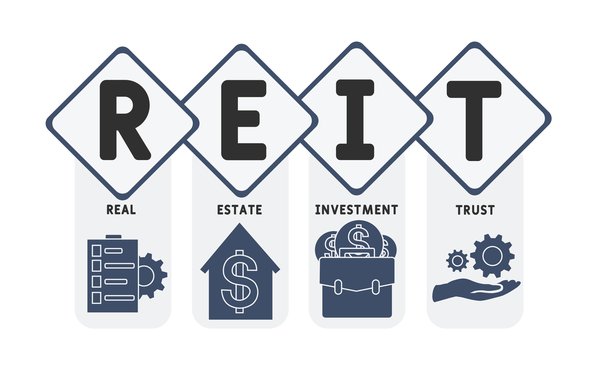There’s no single best way to value any stock. If you ask 20 analysts to calculate the value of a stock, you'd get 20 different answers.
Having said that, knowing the basics about how to value stocks is an important part of an investor’s toolkit. Real estate investment trusts (REITs) are technically stocks, but determining their value is different from most other stocks. They can be a challenge for investors to evaluate effectively.
With that in mind, here’s a rundown of some important metrics REIT investors can use when making decisions. They'll help you gauge the risk involved with a REIT and estimate the market value of a REIT’s assets.

The most important valuation metrics for REIT investors to use
You can use a lot of metrics to value a REIT. But these are the most important ones to know.
Price-to-FFO
You can read a thorough discussion here, but the short version is that net income and earnings per share don’t translate well to REITs. Funds from operations (FFO) makes some adjustments to give a clearer picture of how much money a REIT makes.
Most REITs report FFO per share alongside their headline numbers, so it’s easy to find. When trying to gauge whether a REIT is cheap or expensive relative to peers, use the price-to-FFO (P/FFO) ratio as opposed to the traditional P/E multiple.
Adjusted, normalized, or core FFO
Many REITs also report company-specific FFO metrics. These adjust for one-time items and non-standard income to give the best picture of how profitable the REIT is. When available, these are often the best numbers to use when calculating a P/FFO ratio.
Debt-to-EBITDA
This is the most useful way to compare the leverage of a REIT with others. Many REITs directly report it, but it’s an easy calculation if not. There’s no specific debt-to-EBITDA ratio to look for, but if one REIT’s ratio is significantly higher than its peers’, it could be a red flag.
Credit rating
This isn’t really a metric, but REITs’ debt ratings are a good indicator of how financially solid they are. Plus, a better credit rating means it’s cheaper for that REIT to borrow money. Look for REITs with investment-grade credit ratings. Higher ratings can justify a higher valuation.
Payout ratio
This is the amount of money being paid out as dividends, expressed as a percentage of profits. It helps assess the sustainability of a REIT’s dividend. Be sure you’re comparing the dividend to FFO, not to a REIT’s net income. REITs tend to have higher-than-average payout ratios, and 70–80% of FFO is common. But if this percentage is too close to (or higher than) 100%, a dividend cut could be on the horizon.
How cyclical is a REIT?
Another factor to take into account when valuing REITs is that some are more cyclical, or economically sensitive, than others. The two key things to consider here are the nature of the businesses occupying the properties and the typical lease structure.
Some types of businesses are dependent on a strong economy. Shopping malls are an obvious example -- consumers make fewer discretionary purchases during recessions. Hotels are another good example, as people generally spend less on vacations and other travel. On the other hand, healthcare properties are very recession-resistant. People need healthcare whether the economy is strong or not.
Offices are somewhere in the middle. In tough times, companies tend to cut expenses, but office space is more of a necessity than a luxury.
The lease structure also comes into play here. Long-term leases lock a tenant in for years and generally have annual rent increases built in. For example, retail tenants often sign leases with 10-year initial terms or more. On the other hand, short-term leases make it easy for tenants to vacate in tough times.
One of these factors can help offset the other. For example, retail is an economically sensitive business, but its long leases help minimize vacancies during tough times. On the other hand, residential real estate isn’t terribly cyclical (people need housing), but short-term leases make it easier for people to leave. That can hurt a REIT’s pricing power in tough economies.
How much are a REIT’s assets worth?
Value investors seek to purchase a stock for less than the value of the company’s underlying assets. After all, if you can buy $100 worth of assets for $90, isn’t it in your best interest to do so?
Unfortunately, the value of real estate assets isn’t always easy to determine. For example, if you ask 10 people the value of your own home, it'd be surprising if any of them agreed on an exact number. This is especially true for commercial properties.
One method for determining the value of assets is by examining capitalization rates, or "cap rates." A cap rate is the cash-on-cash return on a real estate asset. For example, if you spend $1 million to acquire a property that generates $60,000 in net income annually, your cap rate is 6%.
Using market average cap rates, we can work backward to get a good estimate of how much a property is worth.
Let’s say that the average Class A office building is selling at a 5% cap rate. By taking the net income and dividing it by this rate, we get a good idea of what a particular property is worth. In this case, a Class A office property that generates $100,000 in annual income would be worth $2 million. So, by considering a REIT’s total income and the average cap rate for its core property type, we can get a ballpark estimate of how much its assets are worth.
I say "ballpark estimate" because this is far from a perfect valuation method. Any REIT’s property portfolio is likely to have a variety of locations, conditions, and other variables, so the average cap rate doesn't translate perfectly to all its properties. Having said that, this can be a good way to get an idea of whether a REIT is trading for a premium or at a discount.
Putting it all together
The most important takeaway from this discussion is that there are several things to consider and that you should look at all of them. It’s a bad idea to base your investment decisions on any single metric.
For example, a REIT could be trading for a significant discount to the value of its assets but also be over-leveraged and highly dependent on a strong economy. The best approach is to consider the big picture and decide whether a REIT is trading cheaply relative to its risk factors and asset quality.



































